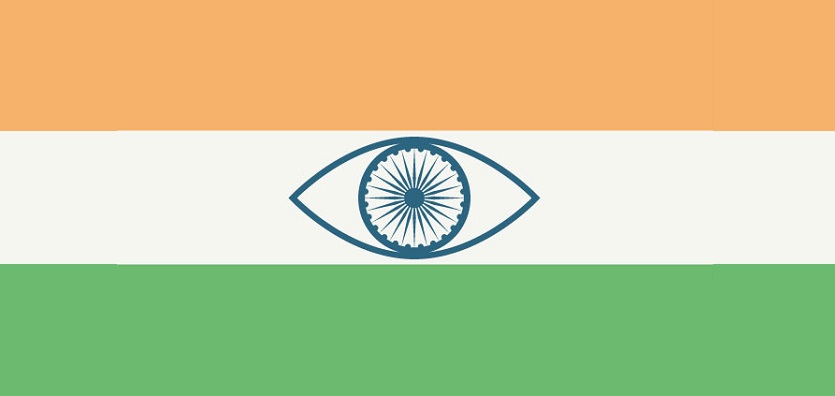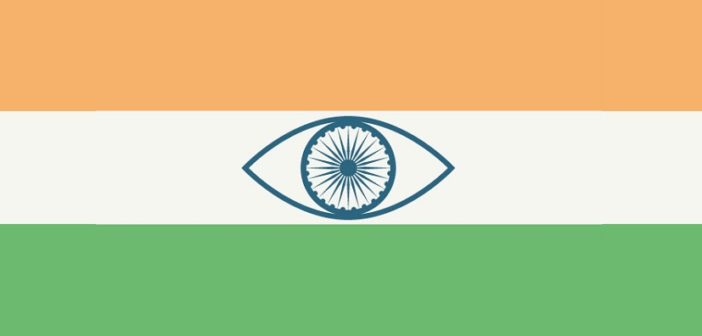
By Sarosh Bana, APSM Correspondent, Mumbai
It took just a half-hour televised address to the nation by Indian Prime Minister Narendra Modi on 24 March, Tuesday, to precipitate the world’s biggest lockdown that placed the entire population of 1.3 billion in quarantine in their homes for the next three weeks.
“From 12 o’clock tonight, there will be a complete lockdown across the country,” said Modi, heralding his government’s most desperate effort to ring-fence the 3.28 million sq km territory, together with its islands, and hamlets in the deserts and snowy reaches, from the scourge of the coronavirus that is rampaging menacingly across the world.
As the infections and toll from this dreaded pandemic rose alarmingly across India, the number of confirmed cases stood at 656 on 26 March, taking the national toll to 13, apart from 42 cured and discharged cases and one of migration.
The tallies are not as frightening when compared to the more stricken countries like Italy, Spain, China, Germany, France, Iran or the United States, but there were fears the contagion would suddenly balloon and transcend into a community contagion from an individual one if preventive steps were not forthcoming, as has happened in Italy for instance.
If this were to happen in India, the repercussions would be calamitous. After all, India has one of the densest populations in the world, with a population almost as huge as China’s packed into an area a third the size. The financial capital city of Mumbai alone has 24 million people, the entire population of Australia’s that is two and a half times the size of India. Besides, about a fifth of all urban-dwellers live in slums in squalid cheek by jowl conditions where personal and social hygiene is difficult to attain.
They would perhaps consider the “stay at home” and “maintain social distancing” directives on account of coronavirus threatening – and impossible – in any case. Also, village life in India is largely community living, where people are lothe to confine themselves at home and prefer to mingle freely.
As the virus transmits from person to person to cause respiratory disease, the government also mandated ‘social distancing’, as the transmission can occur when people are in close contact, within about three feet. The contagion can also spread through respiratory droplets produced when an infected person coughs or sneezes and when these droplets are inhaled by, or land in the mouths or noses of, people who are nearby.
“Today, India is at the stage where our actions will decide to what extent we can bring down the impact of this disaster,” said the Prime Minister. “There will certainly be an economic cost due to the lockdown, but my priority — as also that of every state government and every government functionary — is to save the lives of Indians.” World Health Organisation (WHO) executive director Michael Ryan commented that India had “tremendous capacity” to deal with the coronavirus outbreak and, as the second most populous country, would have an enormous impact on the world’s ability to deal with it.
India’s first active case of the pandemic was carried into the country from China on 30 January. This was a full month after the virus was first detected in Wuhan, in China’s Hubei Province, as a new type of coronavirus. It was isolated on 7 January by laboratory testing and christened coronavirus disease 2019 (COVID-19) or novel coronavirus (nCoV). A new strain not previously identified in humans, COVID-19 is from the family of viruses that cause illness ranging from the common cold to more severe diseases such as Middle East Respiratory Syndrome (MERS) and Severe Acute Respiratory Syndrome (SARS).
It took nine days for the first 50 cases to be recorded in India, but only six days for the next 50, and within the next 10 days, by 26 March, there were 556 new cases. As in many other countries, the complete shutdown in India was imposed to break the chain of infection in order to restrict the spread of the coronavirus. Shortly after the lockdown was imposed, three active cases were detected in Mumbai’s slums, posing a new challenge to the authorities.
The move towards the lockdown, however, was widely considered belated, as administrators had taken time to come to grips with the rapid rise of the contagion. They were also criticised for initially limiting testing to only those who arrived from affected countries or had come in contact with a confirmed case and showed symptoms after two weeks of quarantine. The country has only 150,000 testing kits.
Just about 90 tests a day had been conducted following the outbreak, despite the country’s capacity for as many as 8,000, and till a week ago, only 11,500 people had been tested, despite WHO Director General Tedros Adhanom Ghebreyesus’s exhortation, “We have a simple message to all countries – test, test, test.” Till now, 1.52 million passengers have been screened at Indian airports.
The test being done in India for COVID-19 is the same as that for HIV, H1N1, dengue and polio. Specimens of suspect patients are tested at the National Institute of Virology (NIV), National Centre for Disease Control (NCDC) and the various laboratories of the Indian Council of Medical Research (ICMR). Since the signs and symptoms of COVID-19 are similar to the ordinary flu’s, a study of where a patient has been or whom the patient has had contact with will give clues as to whether the patient may have been exposed to COVID-19. Reported illnesses have ranged from mild symptoms to severe illness and death for confirmed coronavirus disease 2019 (COVID-19) cases.
Worldwide too, while it took 67 days for Covid-19 to infect the first 100,000 people, it took only 11 days for this tally to double, and then in just four days, the disease had reached 300,000 people. Currently, 472,762 active cases and 21,305 deaths have been reported globally, as also 114,749 recoveries.
As a prelude to the unanticipated three-week lockdown, India was placed under a 14-hour “voluntary public curfew” on 22 March, Sunday. This led to the revocation of visas, and suspension of all train, air and bus travel, educational institutions and commercial establishments, with exemption for essential services like healthcare, power and water supply, groceries and everyday provisions, freight trains and trucks, and police and fire brigade.
Parliament too adjourned sine die, 11 days ahead of its scheduled closure, on 3 April, in view of the safety of the parliamentarians, their staff, and media representatives. The Supreme Court announced it would favour conducting virtual hearings on urgent matters as it too considered halting court hearings.
Halting transportation particularly has an enormous impact in the Indian context. The railway system is often described as India’s lifeline, transporting 23 million people across the vast subcontinent each day, some 8.4 billion passengers each year. Similarly, the local trains connecting Mumbai with its far-flung suburbs are the city’s lifeline, ferrying over 8.5 million commuters daily, over 3 billion yearly. Mumbai’s public buses besides are a boon for its 3.6 million daily commuters.
Mumbai is also the capital city of Maharashtra, which, with 15 new cases, overtook Kerala as the state worst hit by the coronavirus, there being 28 states and eight Union Territories in India. Maharashtra has confirmed 122 cases so far, while Kerala has reported 118, nine of them new.
As the Prime Minister, in his evening address, had made no mention of any exemptions, people poured into the streets soon after for panic purchasing. Stores and supermarkets were stripped bare of essentials, the mood aggravated by fears that supplies would also be halted. Of course, a day’s relief before the lockdown would have been welcomed, but would have defeated the very purpose of the lockdown and hence the delayed action was more decried.
It was left to the Home ministry to notify the exemptions as had previously been available. However, as the police were not adequately informed, they abused and assaulted all who ventured out, even doctors and nurses with identification papers, and those delivering food, medicines and life-saving drugs, even snatching away mobile phones from those who were showing their bona fides. In numerous instances, the policemen were joined in the assaults by mobs of politically affiliated vigilantes who have exploited all such situations to intimidate the defenceless.
Delivery website MilkBasket alleged that its delivery agents were forced to dump as much as 15,000 litres of milk and 10,000 kilos of fresh produce as they fled the police attacks, which went viral on the social media. K. Ganesh, promoter of online platforms like BigBasket, FreshMenu and Portea Medical, reported that policemen abused, assaulted and, in one case, even arrested a delivery agent leading to huge disruptions in the delivery of goods, groceries, food, medicines and medical equipment. “Please don’t beat up people trying to deliver goods and services,” he pleaded. There were similar complaints from Ananth Narayanan, the Co-Founder and Chief Executive Officer of Medlife, the largest digital healthcare provider in India that operates through 40 fulfilment centres and three large regional hubs in 22 cities.
Particularly horrifying was an instance where a policeman in western Uttar Pradesh’s Badaun town caned migrant workers – who had started walking to their family homes miles away as they had lost all work because of the lockdown – into leapfrogging on the highway with their oversized rucksacks on their backs as a punishment for violating the lockdown. And though vegetable and fruit vendors were permitted in the streets, policemen, as in Mumbai, went around chasing them away after caning them and upturning their pushcarts and squashing their wares.
Juxtaposed with what the politically privileged got away with, these instances were condemnable. Karnataka state Chief Minister B.S. Yediyurappa, from Modi’s ruling Bharatiya Janata Party (BJP), together with other ministerial colleagues, ignored his own warning against large gatherings by turning up at a wedding that was attended by hundreds. And on the first day of the nationwide lockdown that bans all religious congregations and functions, his BJP counterpart from Uttar Pradesh, Adityanath, permitted the vast annual Ram Navami fair dedicated to Lord Ram and also participated in the festivities.
Union minister Ramdas Athawale, in turn, held a prayer meeting in Mumbai, alongwith Chinese consul general Tang Guocai, to protect the country from the coronavirus by chanting “Go corona, corona go!” A BJP legislator prescribed the partaking of cow dung and cow urine to ward off the virus, following which some enterprising persons started hawking packs of cow dung and jars of cow urine for as much as $7 a kilo.
BJP trolls also put out a rumour on the social media that the clapping and clanging of pots and pans at 5 pm on the day of the “voluntary public curfew” in praise of the healthcare workers had generated cosmic level sound waves that caused the coronavirus to retreat from India and that these waves had been detected by a “NASA satellite and its SD13 wave detector”.
Modi did announce a relief measure of $2 billion to “strengthen the healthcare system to combat the coronavirus”, but it was deemed to be too little too late. What was awaited was how the government would be safeguarding the small businesses and the teeming poor of the country, those surviving below the poverty line, the daily wage-earners, and the small farmers who are seeing their yields rot with inter-state transport being restricted.
These misgivings were rather late in the day, on Thursday (26 March), addressed by Finance Minister Nirmala Sitharaman who announced a relief package worth $22.6 billion that focussed primarily on migrant labourers and daily wage labourers. “A package is ready for the poor who need immediate help, like migrant workers and urban and rural poor,” she informed. “No one will go hungry.”
The package included food security as well direct cash transfer benefits designed to cover 800 million needy. Also announced was a $66,445 insurance cover for three months for each healthcare worker that included doctors, specialists, nurses, paramedics, technicians, ward-boys, and cleaning staff. Any of them meeting with an accident while treating COVID-19 patients would be compensated with this amount under the scheme. There were also relief measures for senior citizens, widows and farmers.
The Prime Minister remarked that the war on which the ancient Indian Sanskrit epic of Mahābhārata was based was won in 18 days, but the fight against coronavirus would take 21 days. “Our aim is to win this war in 21 days,” he said.






